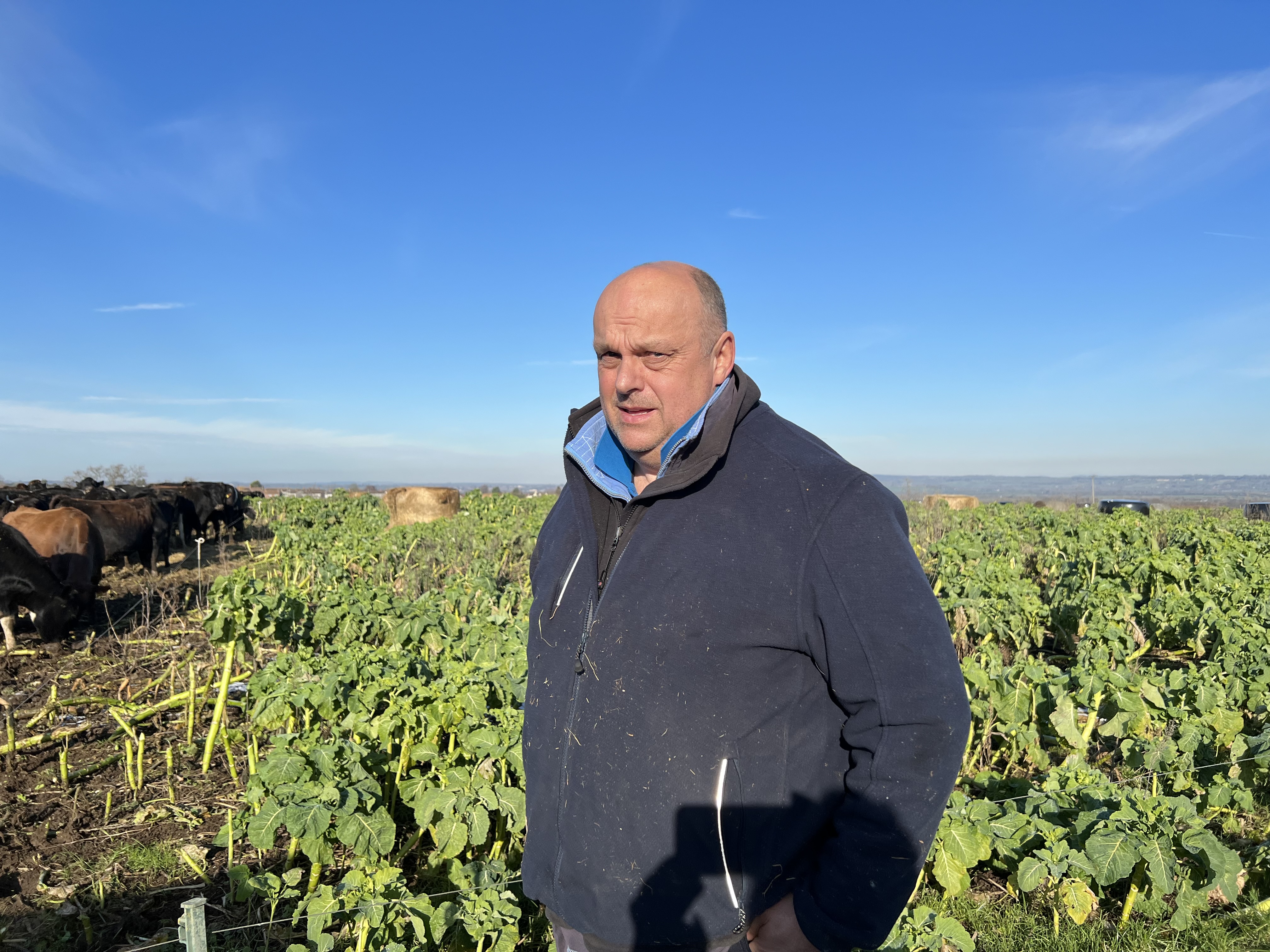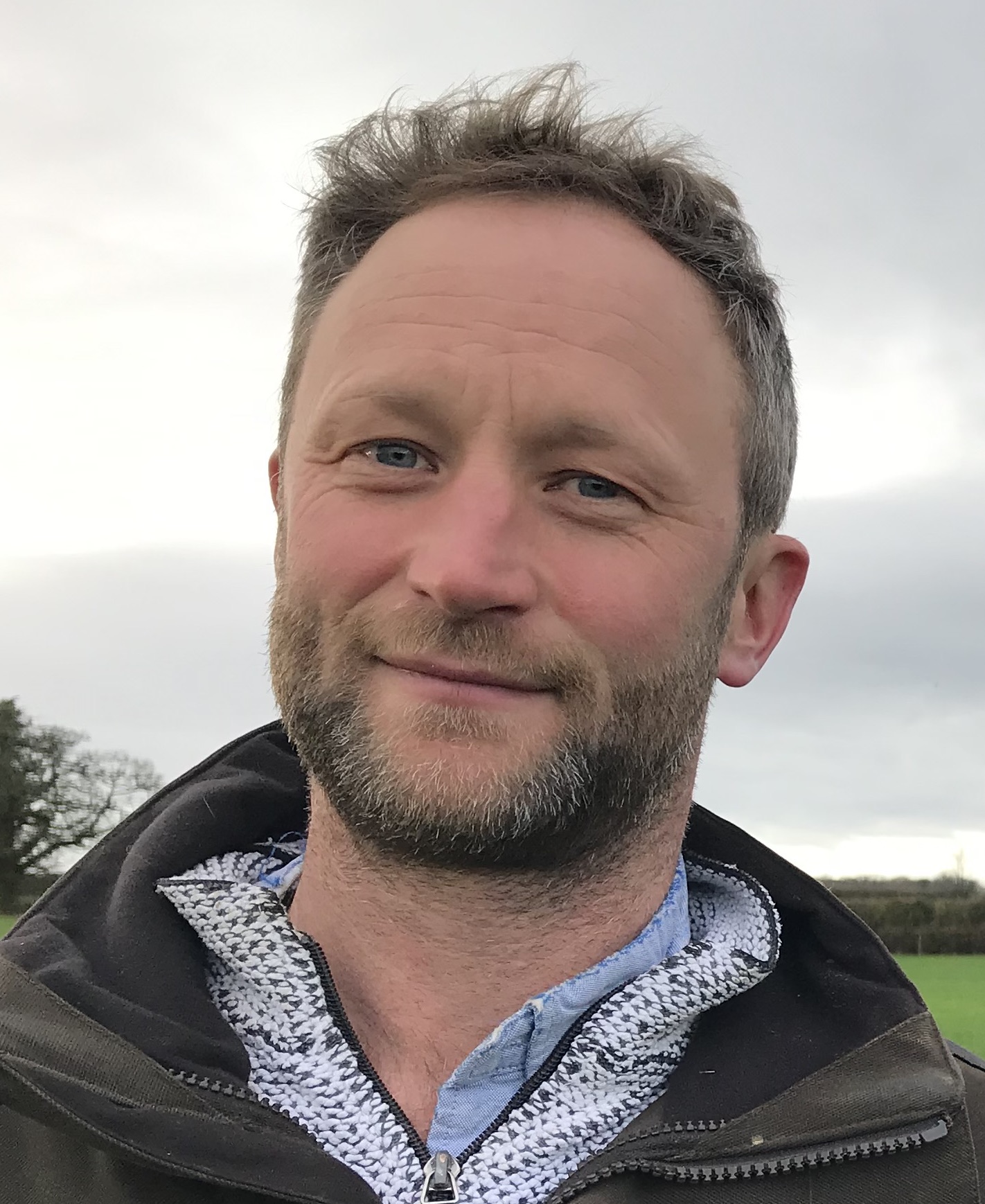Somerset Farmer Works With Local Dairy Farmer To Rear His Yearling Heifers
Giles Simpson has been the tenant at Manor Farm, Yenston, near Templecombe for a decade and has been contract rearing youngstock for two local dairy farmers for nine years, as well as having 150 of his own beef cattle. He is also the agronomy manager for Pearce Seeds based at Sherborne.

 The farm runs to almost 100 hectares with an additional 12 hectares owned three miles away. The farm is long and narrow, just three fields wide but stretching nearly a mile from the front gate to the top of the holding. There are areas of dry stone brash, suitable for outwintering cattle. The land becomes heavier in lower lying areas and the soil is very deficient on phosphorous, with an index of 0.5 across the farm. Additional phosphate is added each year to correct this.
The farm runs to almost 100 hectares with an additional 12 hectares owned three miles away. The farm is long and narrow, just three fields wide but stretching nearly a mile from the front gate to the top of the holding. There are areas of dry stone brash, suitable for outwintering cattle. The land becomes heavier in lower lying areas and the soil is very deficient on phosphorous, with an index of 0.5 across the farm. Additional phosphate is added each year to correct this.
Giles has a dedicated calf shed where he rears 200 baby calves for Tom Kimber of Higher Staverdale Farm, near Wincanton. Alongside this he takes 100 yearling heifers from Guy Chandler who has two farms near Sherborne.
“Guy runs an ultimate low-cost system, with 500 Jersey x New Zealand Friesian dairy cows,” explains Giles Simpson. “They spring block calve from 20 February and are milked once a day. They are fed just on grass and forage, with no maize or cereal feeds. His heifers come here in February and stay with me until they are ready to calve the following year.”
In most years, the heifers graze three hectares of Astera kale from DLF, for the first 12 weeks, with access to bales of high-quality hay which has been triple netted or plastic-wrapped silage.
The hay is cut from meadows that are in a Higher Stewardship scheme, and so not mown until after 15 July. The silage, a four-year cutting ley called VersaMax Flexicrop, also from DLF, is grown in rotation with 10ha of winter barley. First cut is clamped, but the following cuts are baled, quadruple wrapped and stored on their flat surfaces to discourage rook attack.
“This is the eighth year we have grown kale and it suits the system really well,” says Mr Simpson. “We set up electric fences to section off the field working from one end to the next. This, together with a mobile water trough, is moved forward every two days.”
The kale crop forms part of the farm rotation/reseeding operation. In early April, once the yearlings have grazed it all, the ground is drilled with a herb and legume grazing ley which is GS4 compliant, and undersown with spring barley. This is mowed and put into the clamp as wholecrop silage.
“We graze the field as low as it can go and apply 40t/ha of farmyard manure and 70kg of phosphate, before using a minimum tillage cultivator and a Vaderstad drill to sow the kale, in the last week of May,” says Mr Simpson.
“Last year, in the dry it did nothing for three months. It was the worst crop I had ever seen. I didn’t even spray for flea beetle as there was very little leaf. It was just a bit of green peeping out of the soil a couple of inches.
“I think half an inch of rain in July saved it and after a few odd showers in August it shot away. It was thick and waist high by Christmas. We placed the 120 bales out to give the animals six bales a day, in July.
After finishing the kale the heifers go on to graze grass fields across the farm. If grass growth falters in dry spells, they are buffer fed with clamp silage set out in the fields. Giles checks them twice a day – in the morning and early evening.
In May, Giles keeps additional watches to check for heifers that are bulling and puts them in a race in the yard for Mr Chandler to come and serve them by artificial insemination for three weeks. Then three Hereford bulls come in to sweep up any that have not conceived.
“We look after the yearlings in a low-cost manner that replicates the style of farming they will return to when they go home,” says Mr Simpson. ‘It is all very calm and straight forward, and I think this is what Guy appreciates.
“He pays a ‘bed and breakfast’ rate and knows that they are being looked after well. He doesn’t have to worry about them. He knows they will be healthy, the right weight and in-calf when they return to join the herd.”

“The heifers arrive by lorry in February and start off on the kale, before moving onto the grass fields with supplementary silage if needed.
“At around the 8 May we start serving. Estrotect heat packs are placed on their backs and we go in and AI any that are bulling for the next 19 to 20 days. Then three of our Hereford bulls go in with them for another eight weeks. In previous years they have been pregnancy diagnosed, but this year I considering not doing this, as we rarely have any empties.
“Regarding worm control, from now on the intention is to vaccinate at the start of the season against lungworm and to use faecal egg counts to test for roundworms before doing any treatments. Giles’ farm is pretty dry and we have never had a case of liver fluke.
“Having worked with Giles for many years there is a lot of trust between us, and we don’t set any targets. But if I was advising someone going to ‘bed and breakfast’ their youngstock for the first time, I would say that there should be a written agreement with targets. For instance, if there was a problem with the quality of the forage, there should be an agreed mechanism to allow for feeding some cake and who would pay for that.
“Giles’ farm is right between our two farms – so I have no excuse to go and visit the yearlings regularly, which I do. But sometimes when we are really busy, like calving in February, and I can’t get out to see them every day, I know that Giles is keeping a very good eye on them.”